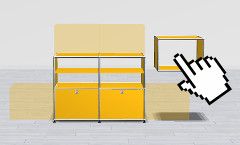Products
Rooms
Manufacturers & Designers
Highlights
Offers
Info
Store
Storage
- Shelves & Cabinets
- Bookshelves
- Wall Mounted Shelving
- Sideboards & Commodes
- Multimedia Units
- Side & Roll Container
- Bar Furniture
- Wardrobes
- Occasional Storage
- Components
- ... all Storage
Service
Fritz Hansen
-
Designer F
- F/P Design
- Fabio Meliota
- Fabio Novembre
- Färg & Blanche
- Felix Stark
- Ferm Living
- Ferruccio Laviani
- Finn Juhl
- Flemming Lassen
- Flemming Lindholdt
- Florence Knoll
- Florian Gross
- Foersom & Hiort-Lorenzen MDD
- Folke Pålsson
- Form Us With Love
- Foster + Partners
- Francesco Rota
- Franco Albini
- Franco Teodoro
- Frank Gehry
- Frank Rettenbacher
- Franz Volhard
- Frédéric Sofia
- Friedrich-Wilhelm Möller
- Friso Kramer & Wim Rietveld
- Fritz Haller
- Fritz Haller & Paul Schärer
- Fritz Hansen
- Front


















